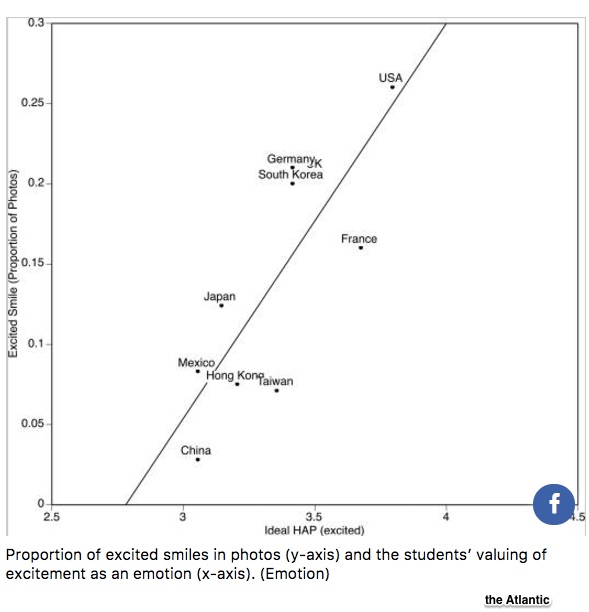Passing someone (and even a car) during my daily walk, I smile.
Recent research indicates that I am doing something uniquely American. Stranger yet, my smile could relate to U.S. immigration history.
The Business of Smiles
Business
Smiles vary from one country to another. During the 1990s when McDonald’s opened their first Russian restaurant in Moscow, they had to train their employees to smile at customers. In Germany, Walmart reversed its smile policy (and soon pulled out of the country for that reason and others) when male shoppers thought female workers were flirting.
Politics
In one study, students from different countries were asked about the emotions they valued. Researchers then compared the students’ answers to pictures of legislators. The results (below) showed that wherever students valued happy emotions, their political leaders displayed them more frequently.
You can see below that American politicians tend to be smiley:
Our Bottom Line: Immigration
Americans might smile more because we are diverse. The reason? When languages vary, nonverbal communication helps.
We can call the U.S. diverse because of its “source populations.” Looking back since 1500, researchers identified 83 source countries for the U.S. From there, they used their smiling data to conclude that the U.S. needed more emotional expression to communicate. They even said that smiling was a vehicle for social bonding.
So now we have a third economic reason to support immigration. Because immigrants tend to bring youth to the U.S. labor force, economists say they will help us avoid Social Security insolvency. As a pay-as-you-go system, Social Security needs more young workers to support retiring Baby Boomers. Also, economists say that immigrants’ spirit and skills have fueled GDP growth.
Now we can add a third benefit. Immigration creates the diversity that necessitates smiling…even when you walk.
My sources and more: Thanks to marginal revolution for alerting me to two Atlantic articles, here and here, on smiling. The articles reminded me of this video about the first McDonald’s in Moscow and what they taught employees about customer service. (It starts in Russian but quickly switches to English.) Similarly, this NY Times article looks at why Walmart had to learn about the meaning of a smile.







